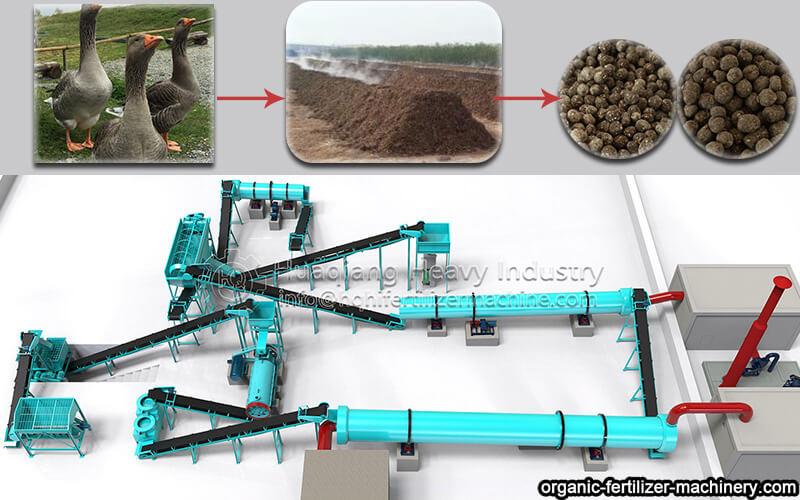1. Take the same amount of Bacillus subtilis, lactic acid bacteria, yeast and so on, and expand the culture to prepare the starter;
2. The raw materials of duck feces were added with starter, then added with water and put into the kiln type solid fermentation tunnel to pile up the fermentation pile. After 15-35 days, the fermentation was completed at one time;
3. The duck excrement which was fermented once was naturally piled up, and the second fermentation was completed when it reached normal temperature;
4. Take back the duck dung from the second fermentation, granulate it with fertilizer granulator for further processing.
Deep processing of fertilizer is mainly granulation treatment, double roller granulator, drum granulator, disc granulator, are common granulation equipment. After granulation, the drying temperature should be controlled below 70 ℃, because the moisture content of fertilizer is about 35% ≤ 40%. If the temperature is too high, the beneficial bacteria in raw materials will be killed. The residence time of particles in the dryer is 40 × 45 minutes, and the rotation speed of the dryer is 4.5 rpm, which can be transported to the outlet. Through the conveyor to the screening machine, large particles and small particles are separated, and the regenerated particles, medium and finished products are crushed through the conveyor belt.
The organic fertilizer manufacturing process is to use the synergistic effect of various microorganisms to convert duck manure into bio-organic fertilizer that is beneficial for plant growth and utilization. After being applied to the soil, the soil has a high organic matter content and relatively good quality, which can provide comprehensive nutrition for crops. , Thereby increasing crop yields and higher economic benefits.
